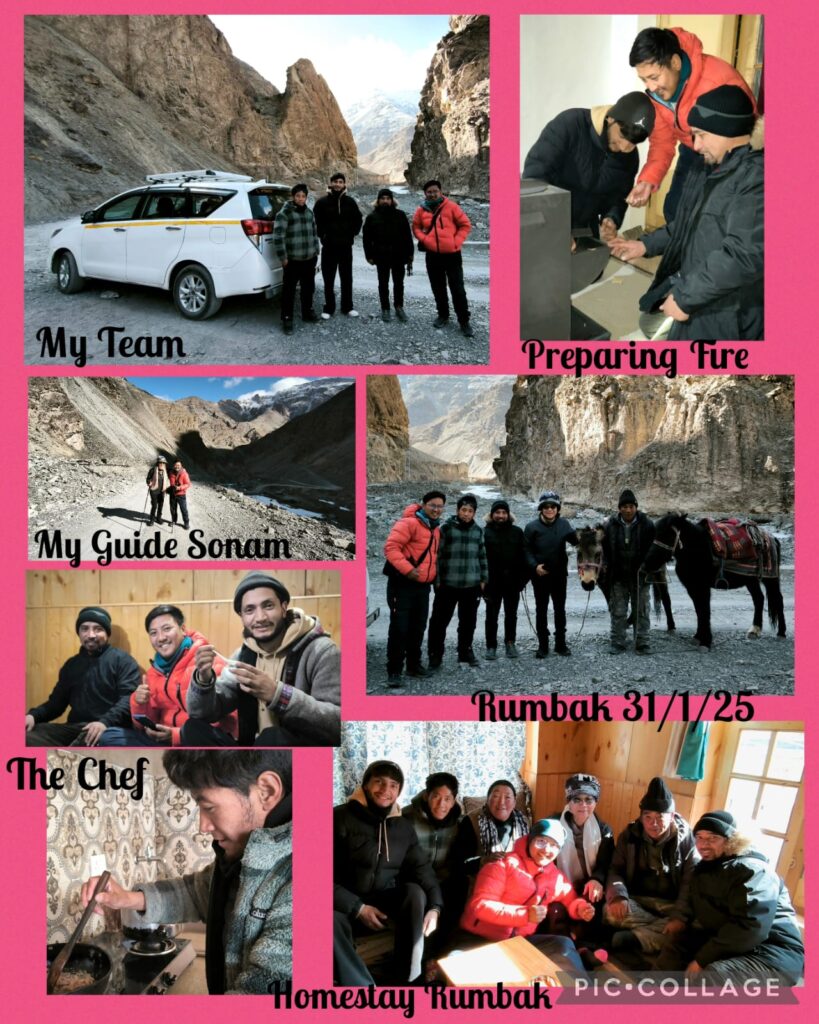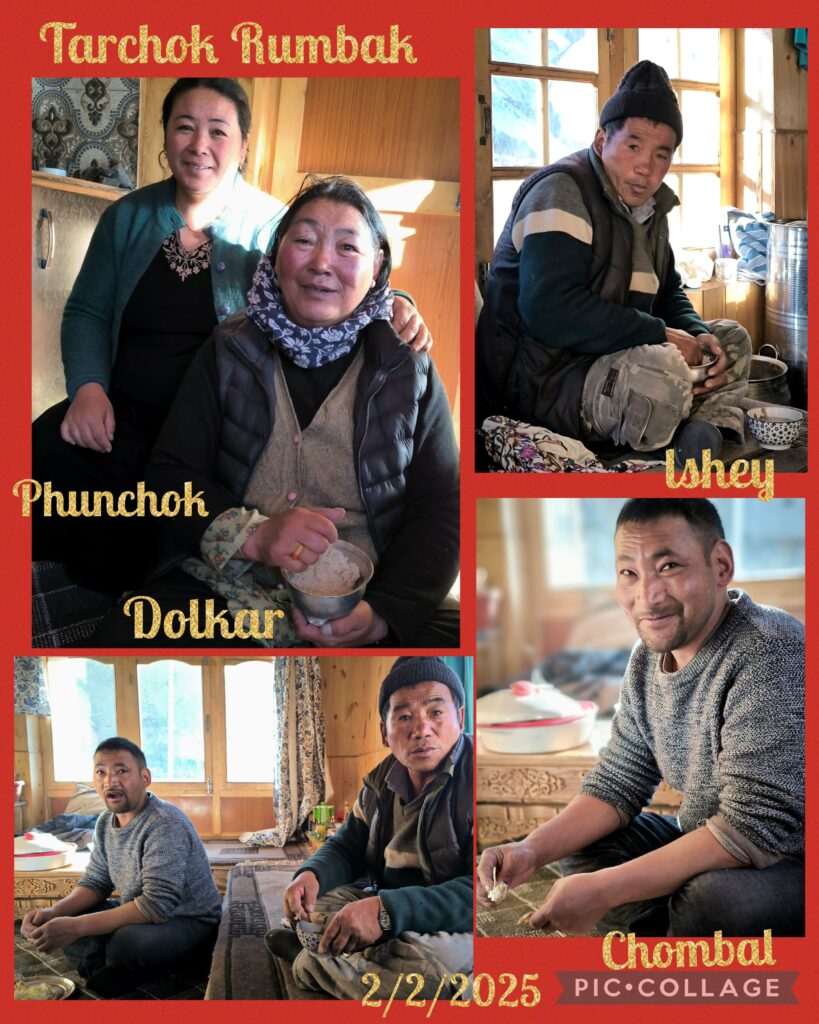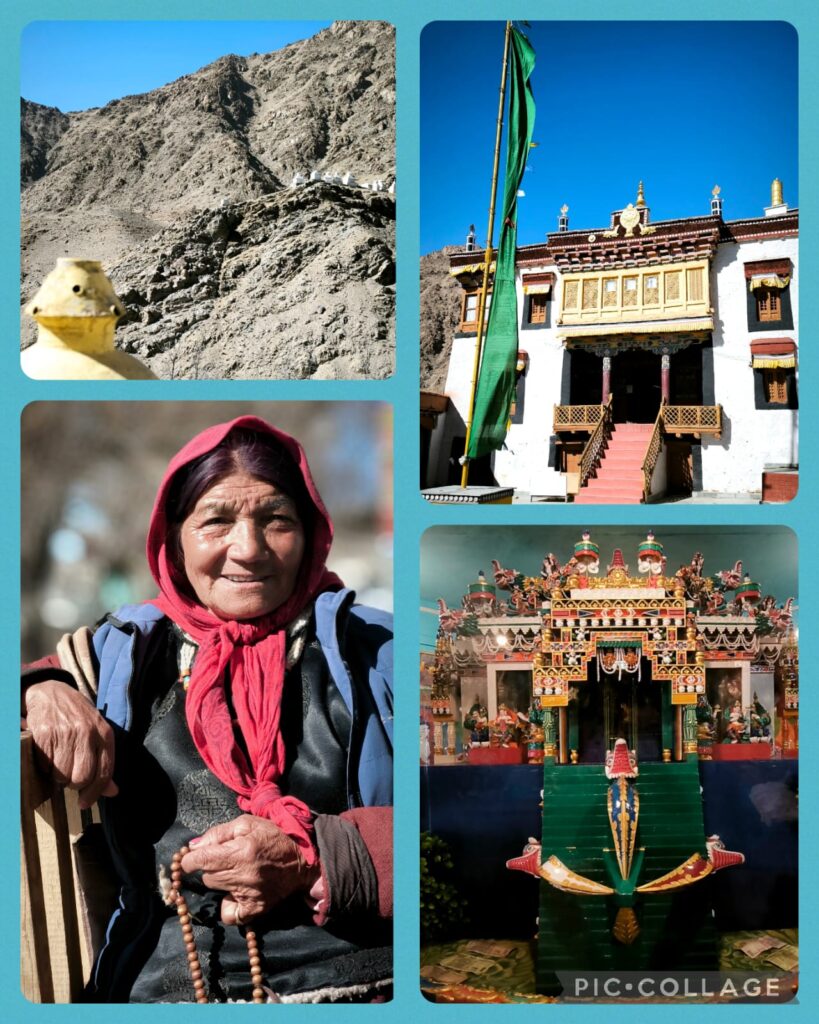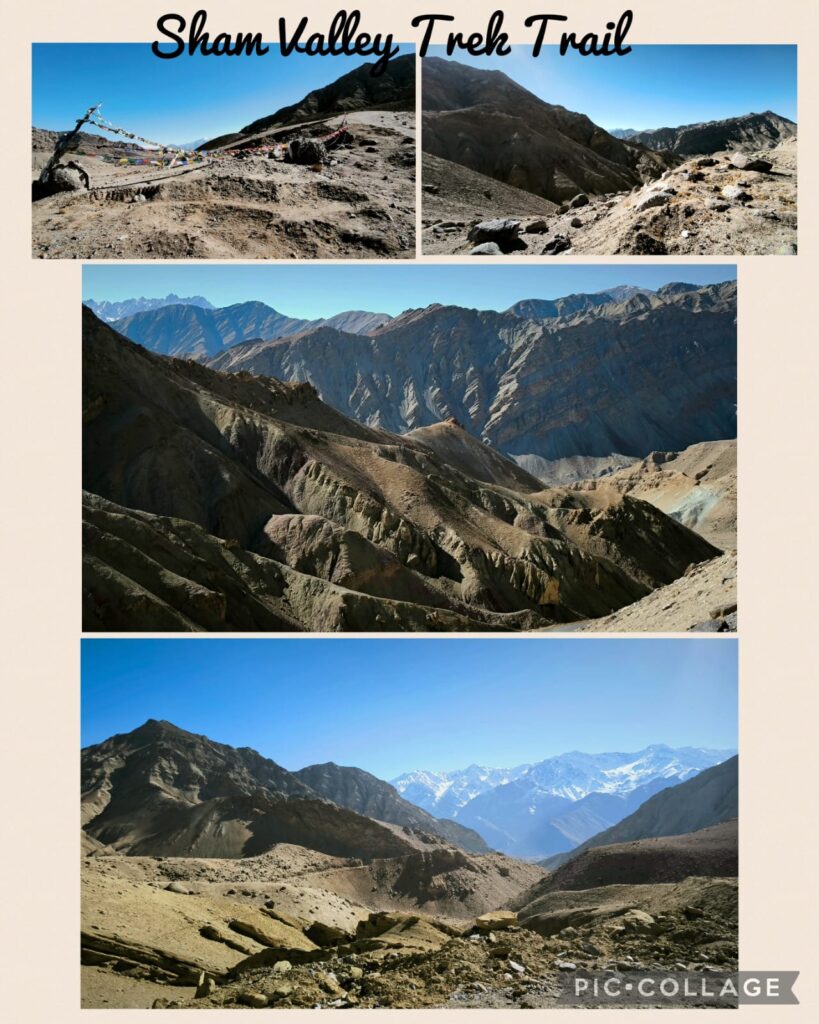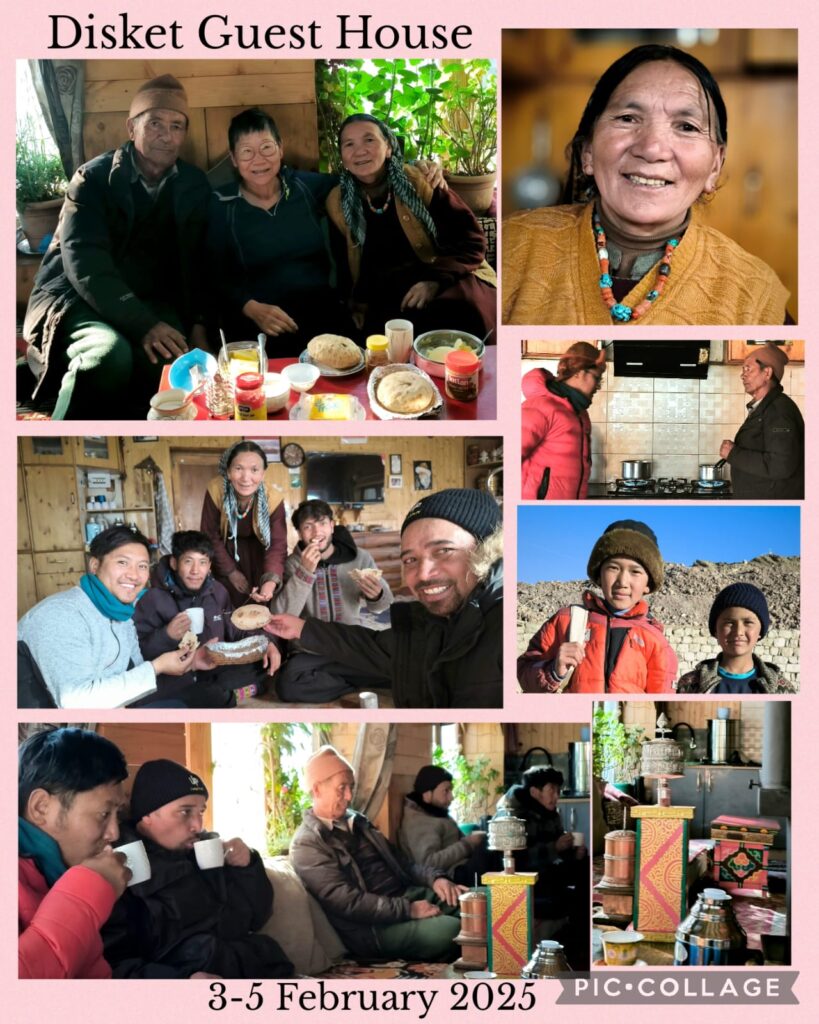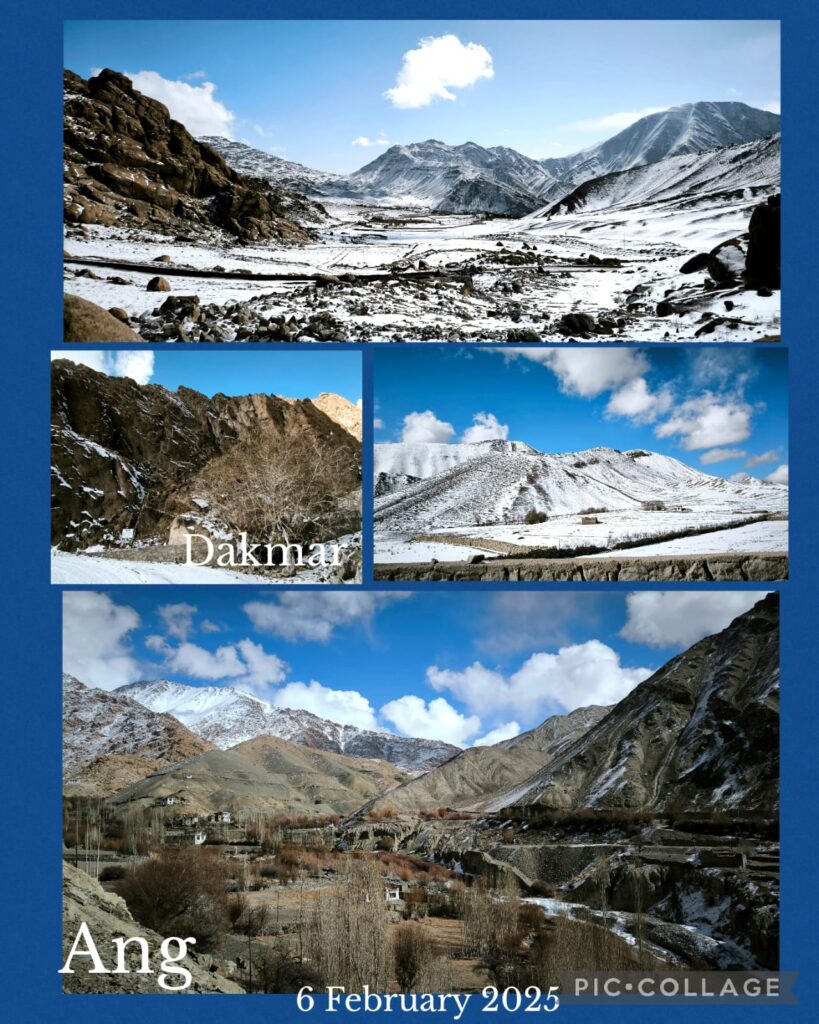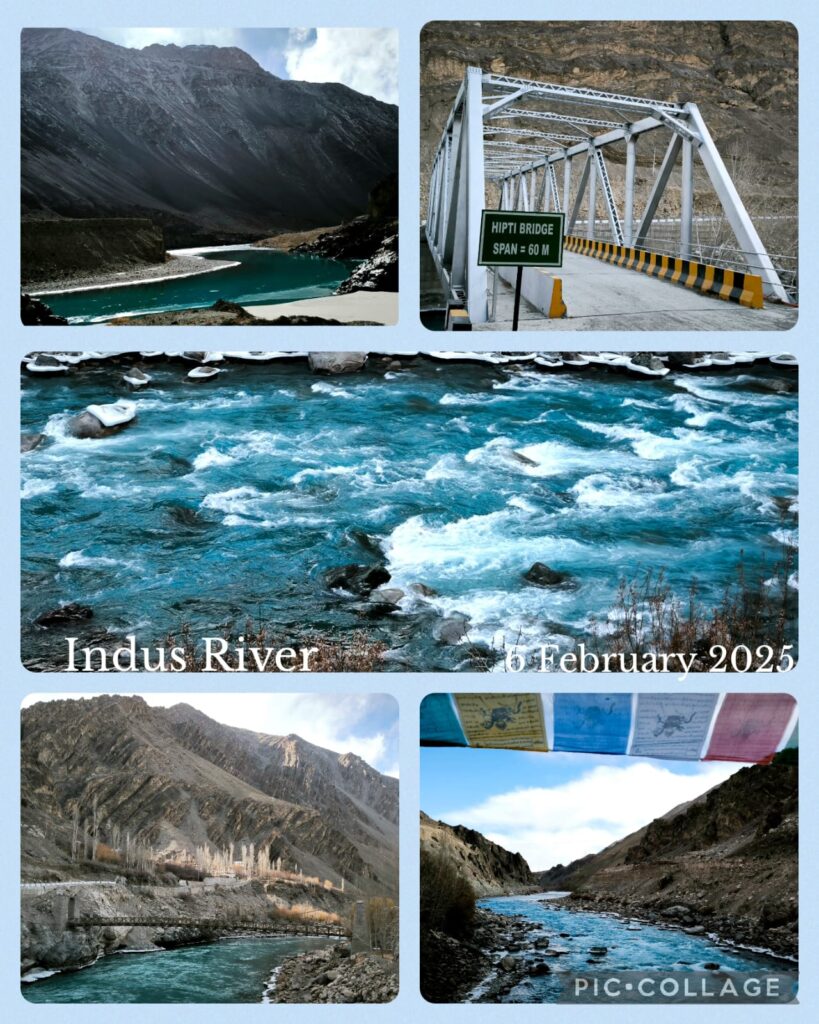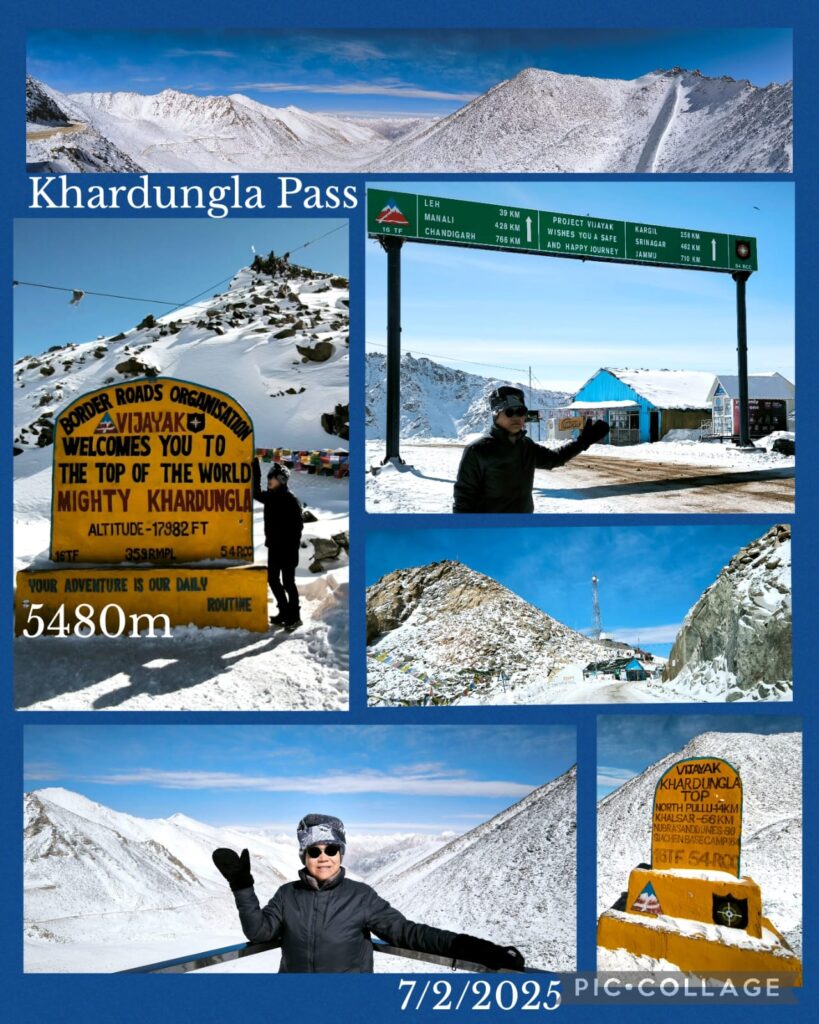Why India?
Pilgrimage is the primary purpose of this trip: I have joined “The Footsteps of the Buddha” organised by the Plum Village from 9 to 22 February. Though I was in Ladakh from August 5 to 22, 2013 visiting Leh and Alchi, and taking a 10-day trekking tour from Chilling to Stok, I decide to take a private tailor-made 11-day snow leopard tour before the pilgrimage.
Ladakh 29/1-8/2
I took a direct Cathay Pacific flight and arrived in Delhi about 10 pm on 28 January. By the time I checked in the over-priced Holiday Inn Express inside Terminal 3, it was about 11:30pm. After a few hours’ sleep, I checked in again shortly after 5:30am on 29 January (First Day of the Chinese New Year of the Snake) in Terminal 3 for Leh, Ladakh for an Indian Air flight at 8:20am. Then I went through the security which was laborious and time-consuming without realising I had been put me on the 6:50am flight. I only discovered the boarding time when taking a casual look at my boarding pass. Gate 31 B was far away and I thought I would not make it. I walked at full speed and luckily reached the gate around 6:20am. I was the last passenger to board! The check-in staff should have advised me that they had put me on an earlier flight!
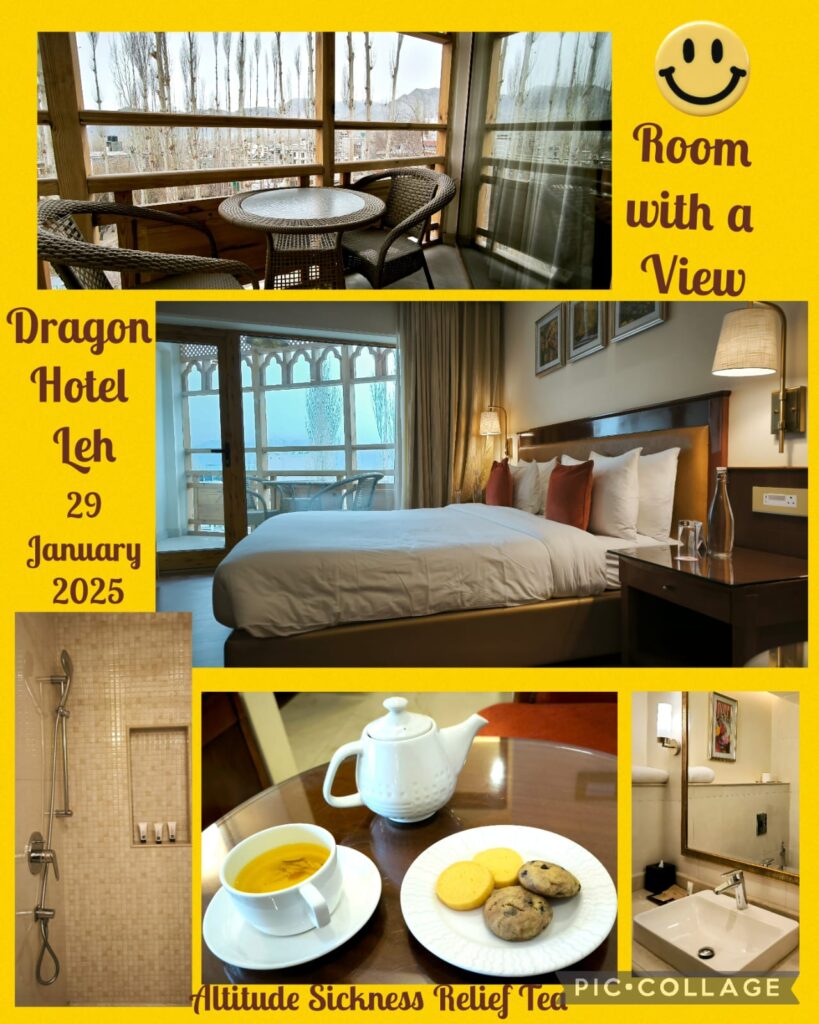
I arrived an hour and a half early in Leh. It was cold (-2 C) and grey. As my sim card did not work, I asked a ground staff at the airport called Ali, my driver who took me to the Dragon Hotel. There were few visitors in Leh in winter. The hotel kindly let me check in early. During my first visit to Leh in 2013, I had been sick for the first two days (possibly as a result of altitude sickness). Hence I decided to spend a lazy day resting in a spacious and comfortable room and drank plenty of water. It worked: I felt good and did not suffer altitude sickness.
Javeed of DreamLadakh came to see me in the afternoon to discuss my travel plan. Instead of camping, I asked for home-stay with toilet facilities. After showing him my website and places I had visited including the Shanti Stupa, Namgyal Tsemo Gompa, Leh Palace and Hemis Monastery, Alchi, and a 11-day Markha Valley trek in 2013, Javeed suggested a visit the Thiksey Monastery the following day to watch the puja ceremony before leaving on 31 January.
30 January Thiksey Monastery and Hemis Monastery
Ali picked me up at 7 am and I arrived at the 12-storey Thiksey Monastery shortly after 7:30 am. The largest monastery of the Gelug School in central Ladakh, the monastery established by Palden Zangpo in the mid 15th century is noted for its resemblance to the Potala Palace in Lhasa. It houses many items of Buddhist art such as stupas, statues, thangkas, wall paintings and swords. Inside the Maitreya Temple installed in 1970 to commemorate the visit of Dalai Lama to the monastery, it contains a 15-metre high statue of Maitreya, the largest of such statue in Ladakh.
A Puja is a prayer seeking Buddhas for protection and guidance. Just before 8 am, a monk started to blow a long horn outside the temple below the main courtyard. Half a dozen monks arrived followed by four novices. While the monks chanted the novices served butter tea and tsampa. I sat in a corner listening to the chanting. A novice kindly served me butter tea. The ceremony lasted for an hour. After the ceremony, I walked to the main courtyard and found only the Maitreya Temple open. Anyway I walked around, saw the old library and had fabulous panoramic views.
My second stop was Hemis Monastery of the Drukpa Kagyu lineage. Though I visited it in 2013, I was happy to return. We stopped for a cup of hot marsala chai (chai) before crossing the Indus River. The country side covered in snow was most beautiful and serene. It was after 12:30pm when I reached the monastery. Memories returned when I stood in the majestic central court. Last time, I visited the museum which has a rich collection. But it is closed in winter. I was disappointed to find all halls closed. Luckily I met a monk who invited me to lunch in the kitchen. Though I was not hungry, I accepted the invitation with gratitude as I could take a glimpse of monastic life. I had rice and potatoes. After lunch, another monk told a novice to open some halls for me and two local women. As a result, I was able to go into the Tara Temple and the main Buddha Hall. A blessing indeed. I was back in the hotel for a late lunch after 3 pm.
January 31 – February 1 Snow Leopard in Rumbak Valley
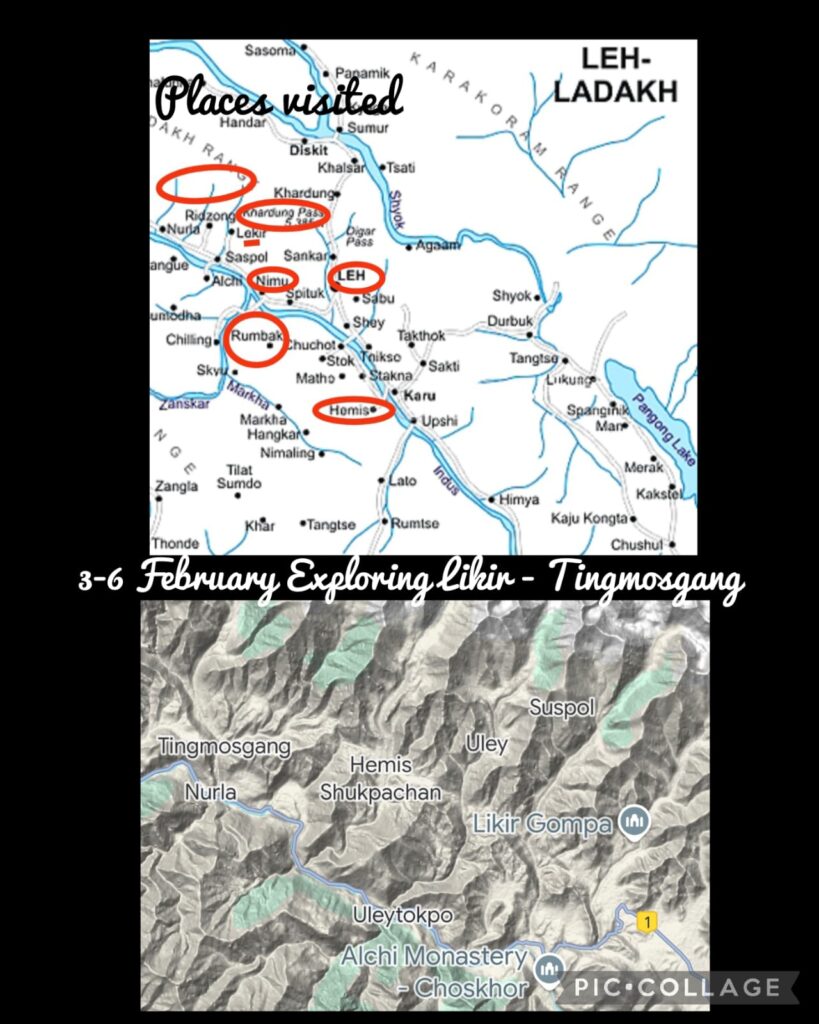
Javeed came to the hotel introducing me to a team of four who would accompany me for the next seven days. Sonam was my guide assisted by an assistant and a chef and Ali was the driver. I set off after 10 am from Leh and Sonam said we would go to Rumbak which was not mentioned in the original itinerary. I was taken by surprise but I trusted they knew best. Perhaps they had heard recent sighting in Rumba.
We crossed the Indus River and drove about an hour and a half to reach our destination. On the way, we saw two mountain goats and met a young hiker who told us he had spent four nights in Rumbak and had seen snow leopards on four occasions. Landscape and rugged terrain of Ladakh are stunning and breathtaking. After a scenic drive through a narrow gorge, we reached Rumbak valley (just over 40 km from Leh) lying within Hemis National Park. The region is known for a rich diversity of wildlife ranging from snow leopards to Tibetan wolves, blue sheep, Asiatic ibex, Ladakh urial and birds. I was captivated by the soaring snow-capped mountains, farmland covered in snow, glacier valley, leafless trees, frozen rivers and iconic local architectures.
Once we entered the valley, we saw a group of 20 -30 tourists and guides on a small plateau with telescopes. Wow, a snow leopard was spotted in the morning near a mountain top in a distance. It was resting and everyone watched eagerly for it to wake up. Sonam set up a telescope while I also used my own binoculars for spotting. It was sunny but freezing and windy. I felt cold even after having a few cups of tea. I discovered a stylish lodge nearby which is called the Rumbak Wildlife Lodge. I was grateful it allowed me to use its toilet so that I had a chance to go inside.
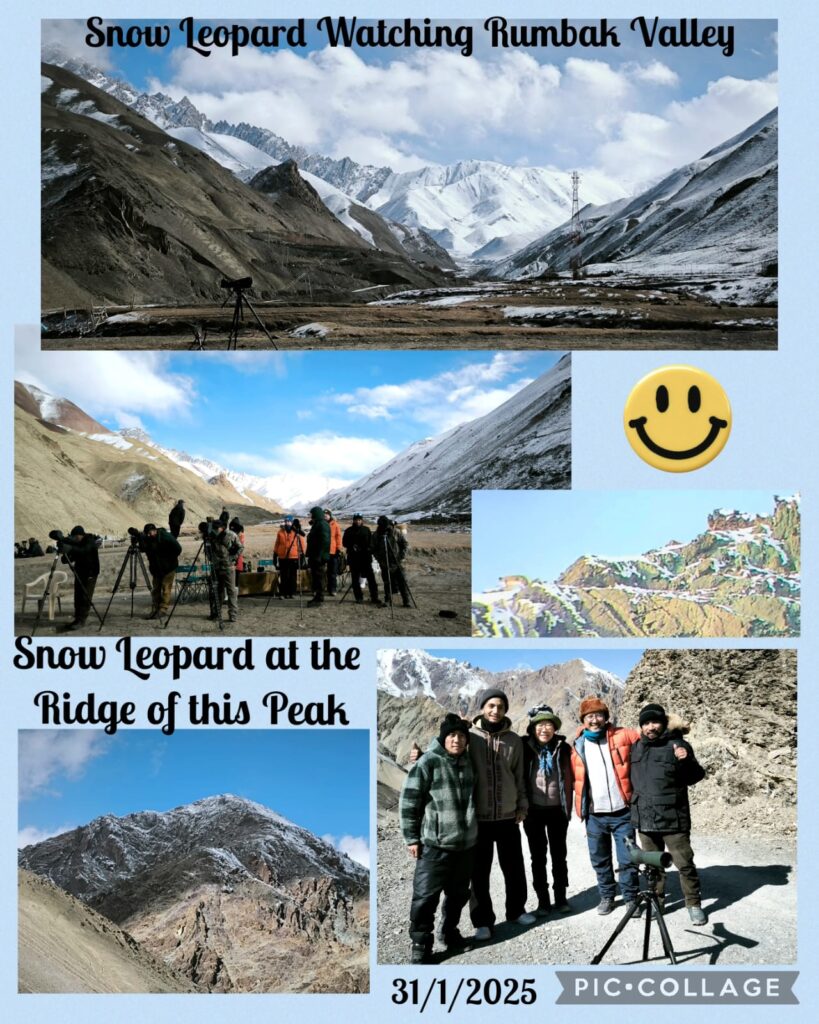
After waiting for an hour or so, we were all ready for lunch. Ali drove us to the village (3960m above sea level) where we stayed in a typical mud house. Sonam said the plan was to stay here for seven nights. I was surprised as I was supposed to visit and stay in the other side of the Indus River. Anyway I trusted Javeed and Sonam knew the best places for spotting snow leopard. I was shown my room on the top of the building with full views of the narrow valley and snow-capped mountains.
We set off after 3:30pm. While approaching the plateau, we could sense the excitement and motion as all telescopes were pointed at the same direction. Unfortunately I walked slowly and by the time I reached the telescope, everyone was yelling and watching the snow leopard walking towards the ridge. I was struggling. Where was it? I could not find it through my binoculars. Eventually I watched it walking steadily and swiftly towards the ridge through Sonam’s telescope. He took a video for me. Within a second, it disappeared! I was excited to spot a snow leopard on the first day. It was however surreal, too lucky to spot it though the moment was too short and too fast! I was not prepared, too slow and unskillful in spotting.
Soon, after the snow leopard, experienced spotters found a lynx on a slope at the far end of a snow-capped mountain. Incredible! We spent the next half an hour watching the lynx sitting and walking around before disappearing in a distance. We also spotted two small hares. These spotters are incredible! It soon got dark and cold. We returned to the homestay and had dinner. I settled in my bed shortly after 8pm. My room was freezing despite the fire. I had a slight headache and I checked my oxygen level and heart beat throughout the night. On top of my own down sleeping bag, I covered myself with a quilt and blanket. The worst experience was to get out of the sleeping bag, get dressed and walk to the toilet outdoor. I had drunk too much water and got up a couple of times. As a result, I had hardly slept.
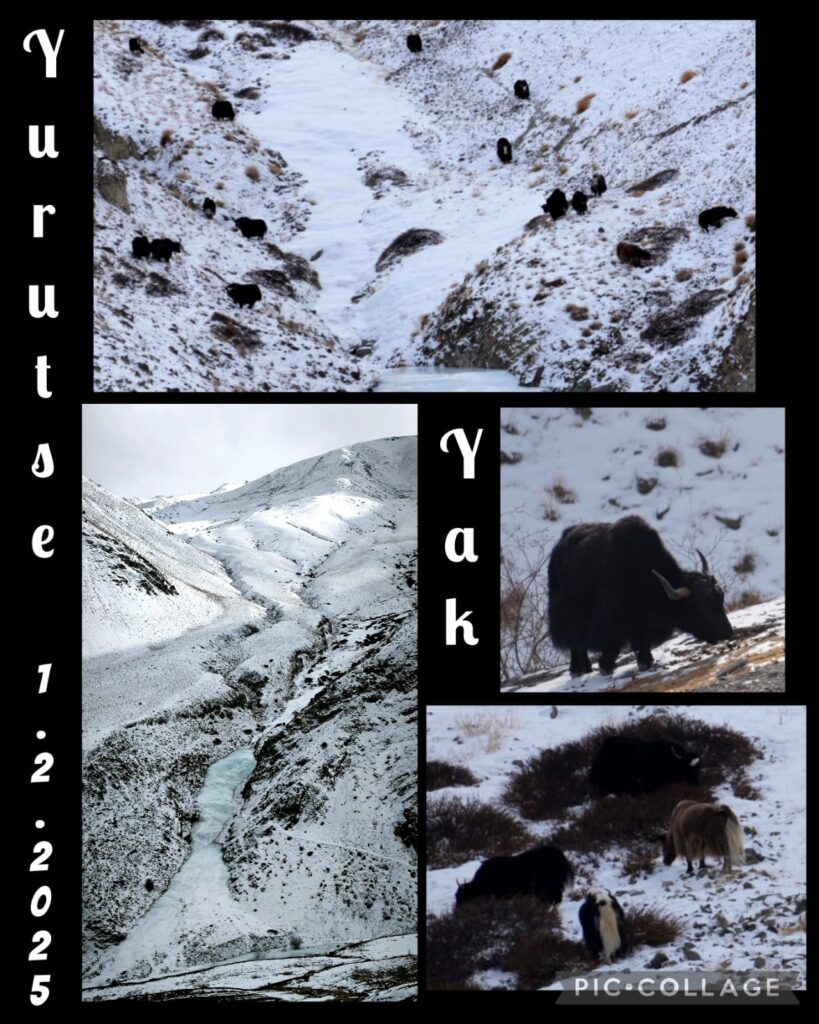
Owing to a sleepless night, I did not feel energetic to get up for breakfast at 8 am. The rising sun began to warm up my room. The water frozen in the bucket beside my bed began to thaw. I did nothing but curled up in my warm and comfortable sleeping bag. Ali and Sonam had gone out spotting and did not return till 10 am. We decided to go out after lunch so that I could have more rest.
After lunch, we drove to the other side of the valley and reached Yurutse which has only one house. We had a great time. The scenery was beautiful. We saw a large group of blue sheep and yaks, and a few hares. We were surprised to find half a dozen of ibex on a slope at the farthest end of a mountain range. In order to avoid getting up to go to the toilet, I stopped drinking after 6 pm. Knowing my body conditions, I decided to leave the following day as I needed better accommodation with proper toilet facilities. Sonam called Javeed who noted my condition and agreed I should return to Leh first.
February 2 – 6 Leh – Likir – Hemis Shukpachan – Tingmosgang – Leh
February 2– I was in better condition after a decent sleep. After breakfast, we set off and visited a nearby village Rumchung before reaching Leh in early afternoon. This photogenic village by a stream has several well-built and maintained houses. The stream was frozen and a walking path covered with yellow and golden leaves was lined with tall trees. We saw half a dozen cows lying in the sun. The valley was tranquil and beautiful. The four guarding angels walked on the frozen stream and posed for photos. We had a great time. When I was back in Leh, I had a late lunch and spent the rest of the day resting in my cosy room.
February 3– We set off after 11 am. The plan was to follow the original itinerary to explore the right side of the Indus River. We followed the Ladakh Highway and stopped at Sangam point which offers an excellent views of the confluence of Indus River and its tributary Zankar River. Then we had a long chai stop at Nimu. Soon we were off the highway and took the side road to Likir Monastery. Located at an elevation of 3700m elevation and 52 km west of Leh and established in 1065 by Lama Duwang of the Gelugpa sect, it has two assembly halls. The main hall contains the statues of Bodhisattva, Amitabha, Sakyamuni, Maitreya and Tsong Khapa (founder of the Gelugpa sect of Buddhism). There are impressive paintings of Confessional Buddhas and Sakyamuni on the walls. Sitting on the roof is a 23m-high gilded gold statue of Maitreya completed in 1999.
We continued driving through Sham Valley passing by Saspochey and Yangthang before reaching the Disket Guest House in Hemis Shukpachan, a largest village with lots of farmland surrounded by soaring mountains on all sides. The guesthouse run by a lovely couple of 76 and 64 is remarkably clean with nice carpets covering the entire floor. I was impressed by my room which had an electric heater and attached bathroom with toilet.
I spent the afternoon drinking butter tea and reading sutra in the sitting/dining room cum kitchen. Seven Americans arrived after 4 pm. We all sat peacefully in this cosy room reading and having dinner prepared by our own cook. I slept well as the heater kept the room warm. I had a flask of hot water to wash my face and feet as well as a hot water bottle to keep me warm. Above all, I could get up to go to the toilet without problem. Perfect!
February 4– We explored the area around Hemis Shukpachan for the next two days. The Americans and I both spent the morning strolling leisurely on a small plateau with commanding views of the Zankar and Ladakh mountain ranges, the Pink Mountain and the Sham Valley trek trail. Just before lunch, we also discovered a small group of blue sheep on the top part of a steep mountain slope. I had a delicious lunch with soup and chicken fried rice prepared by my chef. I watched the blue sheep for a while after lunch. Then we returned to the guest house and I continued to drink chai while reading scriptures. I had a wonderful relaxing afternoon. The experienced guides predicted snow was coming. The guide of the American group invited my group to join them for dinner the next day. We accepted with pleasure and gratitude.
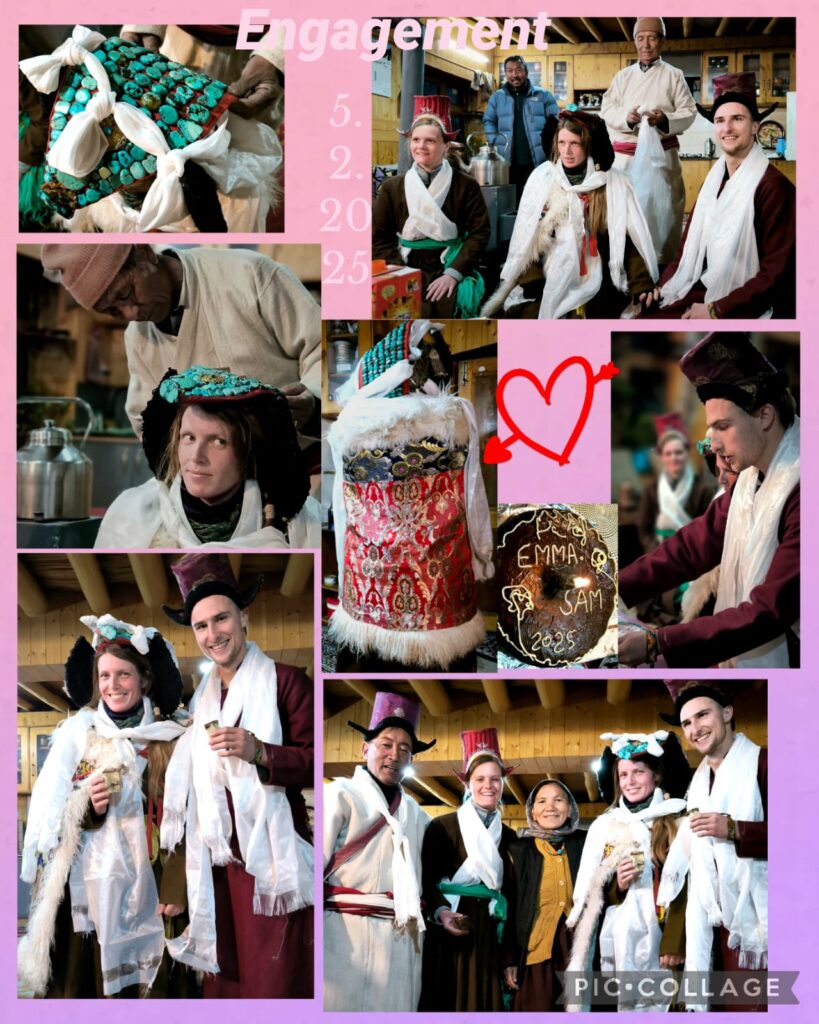
February 5– A white world was awaiting me. Snow had transformed the landscape and scenery: the village was totally white and unworldly serene. I asked Ali and Sonam to return to the same plateau. The Pink Mountain had disappeared. Snow had miraculously softened the rugged rocky slopes of the Ladakh mountain range. Then we discovered a large group of ibex totaling 20-30 and some blue sheep grazing on lower slopes. We watched enthusiastically for over an hour. Then I asked Ali to drive around and we turned back at the end of the tarmac road while Sonam tried to walk to the bottom of the slope to get a closer look of the ibex. It was getting cold and windy and we returned to the guesthouse early.
I had momo (dumpling) for lunch. After having a couple of momo, I did not feel well. It might be too heavy for my stomach. I returned for a rest in my room. Singing from the dining hall woke me up. When I walked in, I discovered my American friends Emma, Sam, and Emma’s sister in full colourful Ladakhi costume sitting in the middle of the room. What was going on? Their guide performed some form of ritual and their chef brought in a beautiful cake for Sam to cut. Oh, it was an engagement ceremony of Emma and Sam conducted in Ladakhi tradition. They served all guests whisky before dinner. Alas, I suddenly had a dummy problem and I lost appetite. I could hardly eat and a wave of nausea came over. The party went on with the locals dancing and singing to congratulate the couple. I felt miserable and left the party to return to my room. Fortunately, I managed to sleep and recovered 80% the next day. But my stomach felt funny for the next few days. I decided to return to Leh as I would like a hot shower and proper rest especially with an upset stomach.
February 6– I told Sonam my decision to return to Leh and my willingness to pay for the hotel myself (5000 rupees). The morning was beautiful with a clear blue sky. I felt energetic and walked up to look at the golden Buddha statue overlooking the valley. Majestic indeed!
After saying goodbye to my hosts, we drove to Ang and finally reached Tingmosgang (92 km west of Leh) which was built by Ladakhi king Drag-pa-Bum as his capital in the 15th century. This lineage still lives on in the Stok Palace today. We first visited the monastery in the village. Several ruins of the palace / fortress on a ridge are picturesque. Inside the monastery, we we saw a precious self-originated image of Avalokitesvara from Kamrup that was brought and installed inside the castle in the 17th century. The temple with a 3-metre high statue of Maitreya was closed.
But the more impressive one is Tserkamo Monastery founded some 800 years ago located at the end of a small valley nearby. There was no tourist. We were thrilled to find a dozen of Ladakh Urial across the river on the other side of the valley. There were also some blue sheep. We were extremely lucky to see such a large group of urial. We set up the telescope, took plenty of photos and watched them for over half an hour with a cup of chai in our hand. We however missed an excellent opportunity to observe them drinking in the river. As soon as we started the engine of the vehicle, they flee away. Ali took the highway from Nurla back to Leh. We stopped by the roadside for lunch. I had a instant Maggie noodle that is nothing compared with the instant noodles I have in Hong Kong!
I was back in Dragon Hotel before 4 pm. After having a fried rice for late lunch/ early dinner, and a hot shower, I felt contented and had a good sleep.
February 7 – 8 Leh
February 7– The only place I planned to visit before leaving was the Khardungla Pass (5359m) nestling in the Karakoram Range. It is about 40km from Leh. Luckily the steep road is now well-paved and efficiently cleared off snow for vehicles to drive through. We took about two hours to reach the pass as we had a lovely photo stop on the way. The temperature plunged to -16 C: after taking a few photos, I returned to the car and Ali happily started to descent. We met Javeed for lunch before I was dropped off in my hotel. I spent an hour strolling in the commercial centre of Leh which has been enlarged and lined with more shops. I passed by a new hotel called Chospa which is modern and beautifully designed. I wished I had discovered it earlier so that I could have stayed there instead of Dragon Hotel when I had to pay for a night myself.
February 8 – Ali drove me to the airport at 10 am for my flight at noon. The Air Indian flight was delayed for over half an hour. Anyway I landed safely in Delhi around 2:30pm.
Remarks
After reading about the elusive snow leopard, I hoped to see one once in my life. Hence, I was extremely lucky to see one on the first day of my visit to Rumbak. Everything turned out well except the homestay in Rumbak with a toilet outside. The Ladakh trip far exceeded my expectations. First, the landscape and winter scenery are stunningly beautiful. Second, wildlife in winter was still amazing. I saw Ladakh urial, blue sheep, yak, ibex, lynx and hare etc. Third, I visited a number of monasteries for the first time. Finally, I had never been tampered and served by a driver, a guide, an assistant guide and a chef. The four young men have been so nice to me. I love Ladakh and would like to return once more to travel from Manli to Kashmir.









